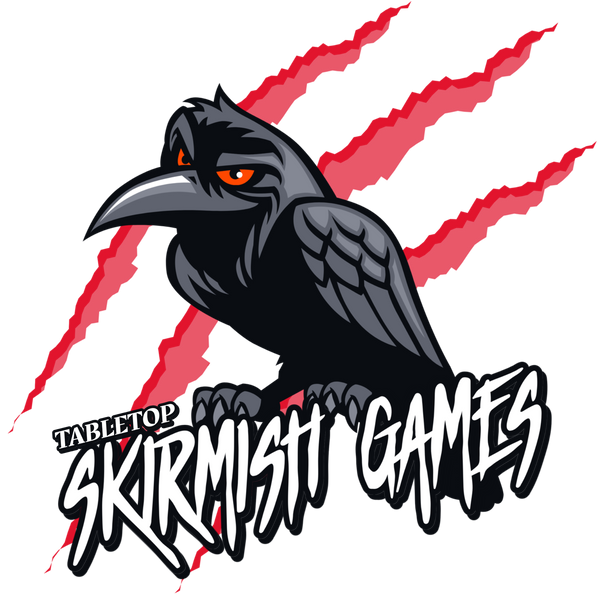Explore and Innovate With Tabletop Skirmish Game Design
Tabletop skirmish games have been a popular choice for gamers for many years, offering a unique and immersive experience that is hard to replicate in other forms of gaming. However, as with any form of gaming, there is always the risk of stagnation and repetition.
To truly keep tabletop skirmish games fresh and exciting, it's important for players and designers alike to explore new ideas and push the boundaries of what is possible. In this blog post, we'll take a closer look at why innovation and exploration are so important within tabletop skirmish game design. Here are 10 ways you can innovate and experiment with your tabletop skirmish games.
1. Embrace Creativity
Tabletop skirmish game design offers a rich playground for creativity, so don't be afraid to think outside the box and explore unconventional ideas. Break free from established conventions and challenge the status quo to bring fresh and unique experiences to players.
I'm a big fan of tropes within a theme or setting, and you'll see that in Population Z. While tropes can provide a familiar framework for players, they are also subject to criticism for potentially contributing to predictability or lack of originality. But if you approach a trope creatively, you can build a new, interesting game element on a well-established foundation.
2. Identify Untapped Themes and Settings
In a recent podcast, I interviewed Marco Pecota, the creator behind Raybox Games, about genres and themes within tabletop skirmish games. I asked Marco if there was a theme or setting that wouldn't work in a game. He said anything could work, and I agree. Just because something hasn't worked in the past doesn't mean you can't find a way to make it happen.
Look for untapped themes and settings that haven't been extensively explored in tabletop skirmish games. Find inspiration in different historical periods, mythical realms, science fiction worlds, or even blending genres together. By venturing into uncharted territories, you have the opportunity to create something truly distinctive.
3. Experiment with Mechanics
Game mechanics are the building blocks of gameplay. Experiment with new mechanics, hybridise existing ones or twist traditional mechanics to create innovative gameplay experiences. Be bold in your design choices and take risks to push the boundaries of what's expected in the genre.
We do have to be careful not to create a new mechanic for the sake of it, though. The mechanic has to make sense in the game; it needs a reason to be there and must add something. Dare I bring up the Kill Team shapes again? That's a clear example of how a game mechanic can take away more than it gives.
4. Focus on Player Agency
Strive to provide players with meaningful choices and agency in your game. Design mechanics that allow players to make impactful decisions and shape the game's outcome. Empower players to explore different strategies and play styles, creating a sense of ownership and engagement.
Player agency is a common theme in my blog posts, and for good reason: it's crucial for the success of a tabletop skirmish game. When designing your game, constantly think about the player experience. Remember that you are setting the stage and defining the boundaries, but it's the players who will tell the stories.
5. Emphasise Narrative and Immersion
Develop rich narratives, compelling backstories, and immersive worlds for your tabletop skirmish game. Engage players not only through strategic gameplay but also through captivating storytelling. Incorporate narrative elements that deepen the connection between players and their characters, factions, or the game world.
In Population Z, I wanted to introduce a central story but leave freedom for unlimited scenarios that either I could write or the players themselves. We publish regular 'one-shot' scenarios that include an in-depth character backstory as the introduction. Players then play the scenario as that character and decide their fate through their decisions and actions (player agency). If the character survives, perhaps they'll meet up with the player's group and join them for future adventures. If they perish, their story adds to the world we are building together as players and game creators.
6. Integrate New Technologies
Explore the integration of new technologies into the tabletop skirmish experience. Consider incorporating augmented reality, companion apps, or digital components that enhance gameplay, provide dynamic content, or facilitate campaign tracking. Introducing technology can open up new possibilities and elevate the gaming experience.
I'm pretty old school when it comes to tabletop skirmish games, but I'm introducing a fun element to the game that players will interact with outside of gameplay. During specific scenarios, players might receive a clue or piece of information that adds to the immersion or helps them in a big boss battle. Rather than putting it in the game book, it would be fun to add a secret section on the website to act like a noticeboard. Players will enter the web address and go to the clue. It's certainly not groundbreaking or hi-tech, but again, it adds to the world-building and immersion.
7. Engage with Other Media
Draw inspiration from other forms of media, such as literature, movies, or video games, and adapt elements that can enhance your skirmish game. Explore how storytelling techniques, visual aesthetics, or world-building strategies from other mediums can be applied to create a unique and immersive tabletop experience.
Engaging with other media is one of my favourites. With Population Z, I wanted to make each scenario feel like an episode from a zombie survival series. I've watched The Walking Dead so many times - all the seasons - and one thing that stands out is the runs to get food and supplies. A small group, sometimes only two or three survivors, will go out to look for supplies. They'll be quiet at first, avoiding walkers as best they can until an event triggers a noise or reaction. That reaction informs the rest of the episode, and the action quickly escalates. So fun!
One helpful piece of advice I go back to when writing scenarios is a two minute YouTube video by the creators of South Park. It's a short video about what's come to be known as the "But & Therefore Rule" by Matt Stone and Trey Parker. I'll link to it below, and I think you'll find it helpful too.
8. Listen to Player Feedback
Actively listen to your players and take their feedback into consideration. Encourage them to share their ideas and suggestions for innovation within the genre. Player feedback can provide valuable insights and spark ideas for new mechanics, themes, or gameplay elements that you may not have considered.
Without players, our games would be nothing, and player feedback is something we should be extremely grateful for. I've covered play testing in a previous blog post and will talk about it much more in the future. It's a crucial part of tabletop skirmish game design, and the feedback you get from it is invaluable.
9. Collaborate and Share Knowledge
Engage in conversations with other game designers and enthusiasts. Attend industry events, join game design communities, and participate in collaborative projects. By sharing knowledge, experiences, and ideas, you can collectively drive innovation and inspire each other to push the boundaries of what's possible.
Earlier in June 2023, I attended my first-ever games expo (as a visitor) in Birmingham, UK. It was an incredible event, filled with passionate game creators and overflowing with innovation and experimentation. I made many connections, formed new business relationships, and met some fantastic game creators. In 2024, I'll be attending as an exhibitor with my own stand, and I can't wait.
10. Embrace the Evolution of Tabletop Skirmish Games
Tabletop skirmish games are constantly evolving. Embrace this evolution and keep a finger on the pulse of industry trends and player preferences. Stay informed about new game releases, mechanics, and innovations to stay inspired and informed on the cutting edge of game design.
There'll undoubtedly be some areas of tabletop skirmish game evolution that you won't resonate with. I'm not a big fan of how Warhammer is moving towards an E-Sports approach with some games, favouring competition over fun, collaborative play.
Not liking a particular aspect of tabletop skirmish games doesn't mean we should ignore it, and we can certainly learn things that we can implement in our own games.
Explore and Innovate With Tabletop Skirmish Game Design
By encouraging exploration and innovation within the tabletop skirmish game genre, you can contribute to the growth and diversification of the gaming landscape. Embrace your creative vision, be open to new ideas, and fearlessly venture into unexplored territory. Through your willingness to explore, experiment, and challenge norms, you have the potential to create groundbreaking and unforgettable tabletop skirmish experiences that captivate players and leave a lasting impact on the genre.
As we get closer to the release of Population Z in January 2024, I'll create step by step examples and detailed posts and videos on tabletop skirmish game creation. I'll go through the decision making process, highlight play-testing discoveries, and much more.
I’d love to hear your thoughts and opinions on the subject, so join in the conversation in the comments below.
Thanks for reading!
Lee
Look out for my new game, Population Z: Welcome to Huntsville, launching in January 2024.

